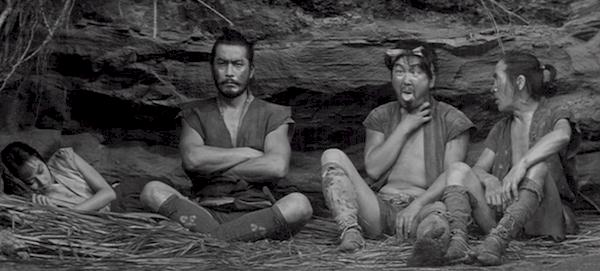The Genius of Kurosawa – The Hidden Fortress
Categories: 3-minute read
Through the eyes of this samurai otaku there was, and indeed is no finer director than Akira Kurosawa. His feudal films are unique, not just in content and quality but in ground-breaking cinematography. Add to his directorial and cinematographical genius the stand-out performances of my favourite samurai character actor, one Toshiro Mifune and many of the Kurosawa films are thin and crispy, warm slices of heaven served on a platinum platter.
I have just finished watching, not for the first time, perhaps the most comedic of the great Kurosawa films and I feel the need to share the love that I feel for these movies. The film I speak of is The Hidden Fortress (隠し砦の三悪人, Kakushi toride no san akunin) which was released in 1958.

This film was ‘famously’ the inspiration for George Lucas in telling the Star Wars story from the viewpoint of the droids, R2-D2 and C3P0. In Hidden Fortress these roles are played by luckless, greedy, squabbling wasters Matashichi and Tahei and it is through these characters that the comedy element of the movie is beautifully delivered.. that will be the only time either are referred to in the same sentence as the adjective beautiful!
The other main characters are General Rokurota Makabe played by the always impressive Toshiro Mifune and Princess Yuki (Misa Uehara). Viewers will be forgiven for noticing similarities between this ballsy princess and the rebel alliance’s very own Princess Leia.
The story tells of the journey to return Leia.. sorry, Yuki to her homelands where she is heir to a fallen state. The travels take the posse behind enemy lines and on several amusing adventures, Mifune plays a fantastic straight man in support of the comic peasants!
This movie was in many ways a triumph of cinematography for Akira Kurosawa, there are several techniques which he utilised here which have been copied and reproduced in many a modern flick, such as the frame wipe (another Lucas favourite) and the fast-motion panning shots (horse chase) which were unique in the late 50s. The idea of telling the story from the perspective of the two lowly peasants Matashichi and Tahei was brilliant but I suspect may have been an idea gleamed from Ryūnosuke Akutagawa’s short story In a Bamboo Grove, the story of which is told in another great Kurosawa film, Rashōmon (another Akutagawa story).. but this is merely a personal observation.
Whilst there are many superior samurai films from the Kurosawa stable and beyond, this light-hearted adventure holds a soft spot in my heart as it really is surprisingly funny. I’d recommend this film wholeheartedly not just to the die-hard samurai fan but to anyone who in this day and age can sit comfortably through a black and white movie. If this was a movie review site and I had some sort of star rating system then I think I’d give this movie a 4 Centauri.
Interactions
|
If you do not have a webmentions enabled website then please use the comment parade form below.
Comment Parade
Please copy the following and paste into the URL field below: https://jon.kelbie.scot/article/the_genius_of_kurosawa__the_hidden_fortress/

